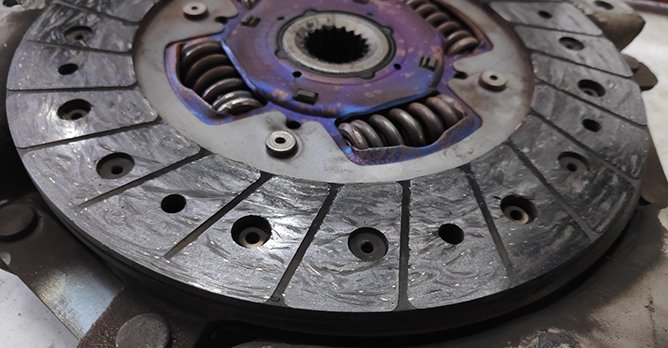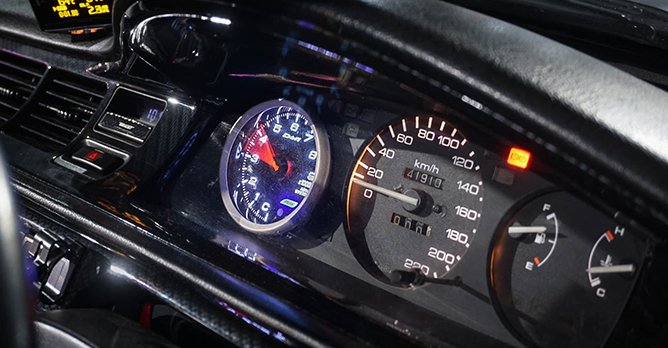Here's how you can drive a manual transmission equipped car like a professional driver
24 Nov 2022|15,623 views
Cars equipped with a manual transmission are few and far between these days, but car enthusiasts commonly regard these machines as the ones to have, citing the enhanced connection between man and machine.
Despite being a skill that's relatively easy to pick up, it is one that takes a fair bit of effort and practice to master. And if you are someone who has opted for a manual by choice, this is the article for you to take your driving skills up another notch.
1. Seating position
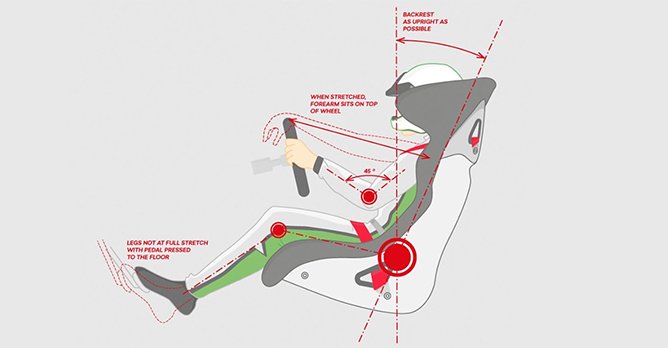
But an ideal seating position doesn't just affect your comfort and spinal health. Adopting a good seating position also affects the control you have over your car - sitting right is the first step to driving a car properly, and even more so for a manual. Unlike driving an automatic, you need the gear lever and clutch pedal within comfortable reach in order to operate them properly. Moreover, a good position also minimises discomfort and fatigue during extended driving stints, such as on a road trip.
As a general guide, you'll want to keep the backrest as upright as possible - this affects your vision of the road and the feedback your body feels when the car is in motion. Your legs should not be at full stretch when you press the pedals to the floor - a good way to gauge would be to fully depress the clutch pedal and adjust the seat to allow a slight bend in your leg. While seated properly, stretch out your arm and place it over the steering wheel - your wrist should be just on top of the steering wheel.
2. Clutch control
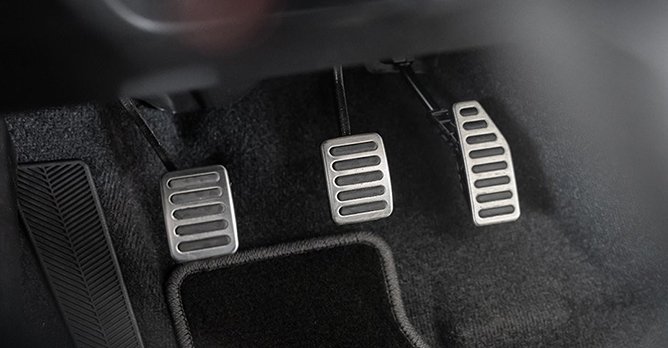
Operating the clutch properly while driving is, however, a little more complicated. If you were to let off the clutch pedal too abruptly, the car will jerk, and you might even stall the car when moving off. If you were to let go of the clutch too slowly, you will induce excessive wear on the clutch, and anyone near you will realise your lack of expertise in driving a manual.
The point is, practice makes perfect, and with some conscious effort in perfecting clutch control, you'll go a long way at mastering it. Soon, you'll be able to drive a manual car smoothly and comfortably without causing your passengers to puke out their lunch.
3. Using the correct gear
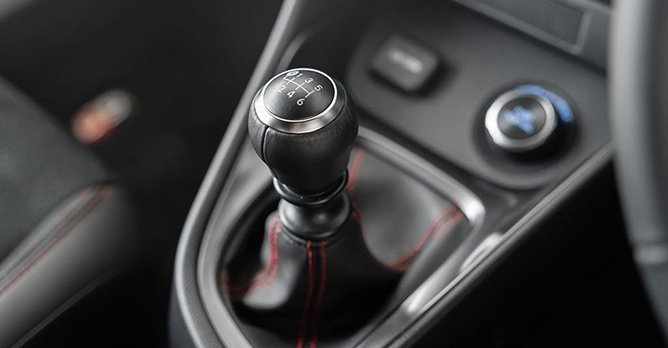
You see, internal combustion engines put out useable power at a range of engine RPM. This characteristic is why a gearbox is even needed.
The idea is to keep the engine within its power band for the most effective power output.
Lower gears are used to move the car off from a dead stop, and are also useful on inclines by multiplying the torque that is sent to the ground through the gear ratio reduction. Likewise, higher gears allow the car to cruise along without overworking the engine at a high RPM.
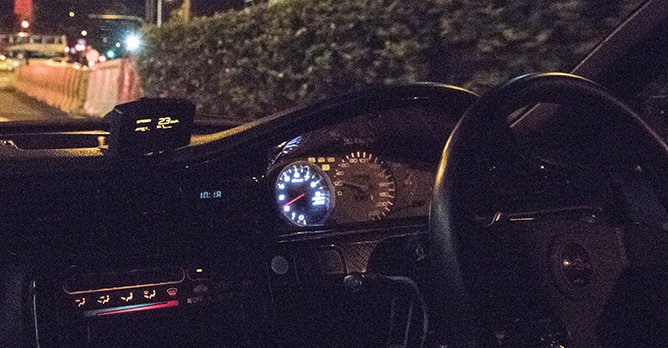
While you shouldn't use too low a gear, as the high RPM will affect efficiency and the longevity of the engine (accidentally downshifting to a lower gear can even cause disastrous engine damage as it can bring the RPM exceedingly high), you shouldn't use too high a gear as well.
If you were to mash the throttle at low RPMs and a high gear, not only would the engine struggle to pick up speed, you would also be putting undue stress on it, potentially damaging the engine.
4. Don't ride the clutch
In case you didn't know, you shouldn't be resting your foot on the clutch pedal after you have gotten into gear.
Resting your foot on the clutch pedal is known as riding the clutch. By doing so, the pressure of your foot prevents the clutch from fully engaging. This results in clutch slippage, which will reduce the efficiency of power transfer from the engine to the wheels, and also cause the premature wear of your car's clutch (there are cases where a brand new clutch only lasted for mere months due to this poor habit).
So, make use of the footrest to the left of the clutch pedal. Don't be lazy and leave your foot on the clutch pedal thinking that it's alright.
5. Rev-matching
Watch any motorsport, and you would notice the momentary rise in engine RPMs when the drivers down shifts before a turn. In fact, some sporty cars these days will even do it automatically when you downshift.
While at a particular wheel speed, a lower gear would result in a higher engine RPM. Hence, when you downshift to a lower gear, the engine RPM is now too low for the gear, causing a braking effect on the driven wheels, which might even lock up the wheel momentarily.
In the cabin, this translates into a jerky motion that is not just uncomfortable, but can also result in a momentary loss of traction on the driven wheels. This disruptive effect will put a large amount of stress on the drivetrain, and can even upset the balance of the car while in motion. If you were going at speed or driving on a low grip surface, it can easily cause you to lose control of the car.

Once you have mastered rev-matching, you can then venture into heel-toe downshifts, which simply put, is to combine the act of rev-matching along with braking (which require some fancy footwork). This skill is essential in performance driving as it allows you to slow a manual car down without upsetting its balance, all while remaining in the favourable power band.
Here are some articles that you might be interested in:
Are you a new driver taking to the road? Read our helpful hints first!
5 habits that good drivers possess
5 dangerous driving habits to watch out for when driving in Singapore
Be careful around trucks - they can squash you like an ant
Car crashes are always happening on rainy days! But why?
Paddle shifters - are they better than a standard manual transmission?
Want to kickstart your journey with a manual car? Check out these used manual cars that are available now!
Cars equipped with a manual transmission are few and far between these days, but car enthusiasts commonly regard these machines as the ones to have, citing the enhanced connection between man and machine.
Despite being a skill that's relatively easy to pick up, it is one that takes a fair bit of effort and practice to master. And if you are someone who has opted for a manual by choice, this is the article for you to take your driving skills up another notch.
1. Seating position

But an ideal seating position doesn't just affect your comfort and spinal health. Adopting a good seating position also affects the control you have over your car - sitting right is the first step to driving a car properly, and even more so for a manual. Unlike driving an automatic, you need the gear lever and clutch pedal within comfortable reach in order to operate them properly. Moreover, a good position also minimises discomfort and fatigue during extended driving stints, such as on a road trip.
As a general guide, you'll want to keep the backrest as upright as possible - this affects your vision of the road and the feedback your body feels when the car is in motion. Your legs should not be at full stretch when you press the pedals to the floor - a good way to gauge would be to fully depress the clutch pedal and adjust the seat to allow a slight bend in your leg. While seated properly, stretch out your arm and place it over the steering wheel - your wrist should be just on top of the steering wheel.
2. Clutch control

Operating the clutch properly while driving is, however, a little more complicated. If you were to let off the clutch pedal too abruptly, the car will jerk, and you might even stall the car when moving off. If you were to let go of the clutch too slowly, you will induce excessive wear on the clutch, and anyone near you will realise your lack of expertise in driving a manual.
The point is, practice makes perfect, and with some conscious effort in perfecting clutch control, you'll go a long way at mastering it. Soon, you'll be able to drive a manual car smoothly and comfortably without causing your passengers to puke out their lunch.
3. Using the correct gear

You see, internal combustion engines put out useable power at a range of engine RPM. This characteristic is why a gearbox is even needed.
The idea is to keep the engine within its power band for the most effective power output.
Lower gears are used to move the car off from a dead stop, and are also useful on inclines by multiplying the torque that is sent to the ground through the gear ratio reduction. Likewise, higher gears allow the car to cruise along without overworking the engine at a high RPM.

While you shouldn't use too low a gear, as the high RPM will affect efficiency and the longevity of the engine (accidentally downshifting to a lower gear can even cause disastrous engine damage as it can bring the RPM exceedingly high), you shouldn't use too high a gear as well.
If you were to mash the throttle at low RPMs and a high gear, not only would the engine struggle to pick up speed, you would also be putting undue stress on it, potentially damaging the engine.
4. Don't ride the clutch
In case you didn't know, you shouldn't be resting your foot on the clutch pedal after you have gotten into gear.
Resting your foot on the clutch pedal is known as riding the clutch. By doing so, the pressure of your foot prevents the clutch from fully engaging. This results in clutch slippage, which will reduce the efficiency of power transfer from the engine to the wheels, and also cause the premature wear of your car's clutch (there are cases where a brand new clutch only lasted for mere months due to this poor habit).
So, make use of the footrest to the left of the clutch pedal. Don't be lazy and leave your foot on the clutch pedal thinking that it's alright.
5. Rev-matching
Watch any motorsport, and you would notice the momentary rise in engine RPMs when the drivers down shifts before a turn. In fact, some sporty cars these days will even do it automatically when you downshift.
While at a particular wheel speed, a lower gear would result in a higher engine RPM. Hence, when you downshift to a lower gear, the engine RPM is now too low for the gear, causing a braking effect on the driven wheels, which might even lock up the wheel momentarily.
In the cabin, this translates into a jerky motion that is not just uncomfortable, but can also result in a momentary loss of traction on the driven wheels. This disruptive effect will put a large amount of stress on the drivetrain, and can even upset the balance of the car while in motion. If you were going at speed or driving on a low grip surface, it can easily cause you to lose control of the car.

Once you have mastered rev-matching, you can then venture into heel-toe downshifts, which simply put, is to combine the act of rev-matching along with braking (which require some fancy footwork). This skill is essential in performance driving as it allows you to slow a manual car down without upsetting its balance, all while remaining in the favourable power band.
Here are some articles that you might be interested in:
Are you a new driver taking to the road? Read our helpful hints first!
5 habits that good drivers possess
5 dangerous driving habits to watch out for when driving in Singapore
Be careful around trucks - they can squash you like an ant
Car crashes are always happening on rainy days! But why?
Paddle shifters - are they better than a standard manual transmission?
Want to kickstart your journey with a manual car? Check out these used manual cars that are available now!








